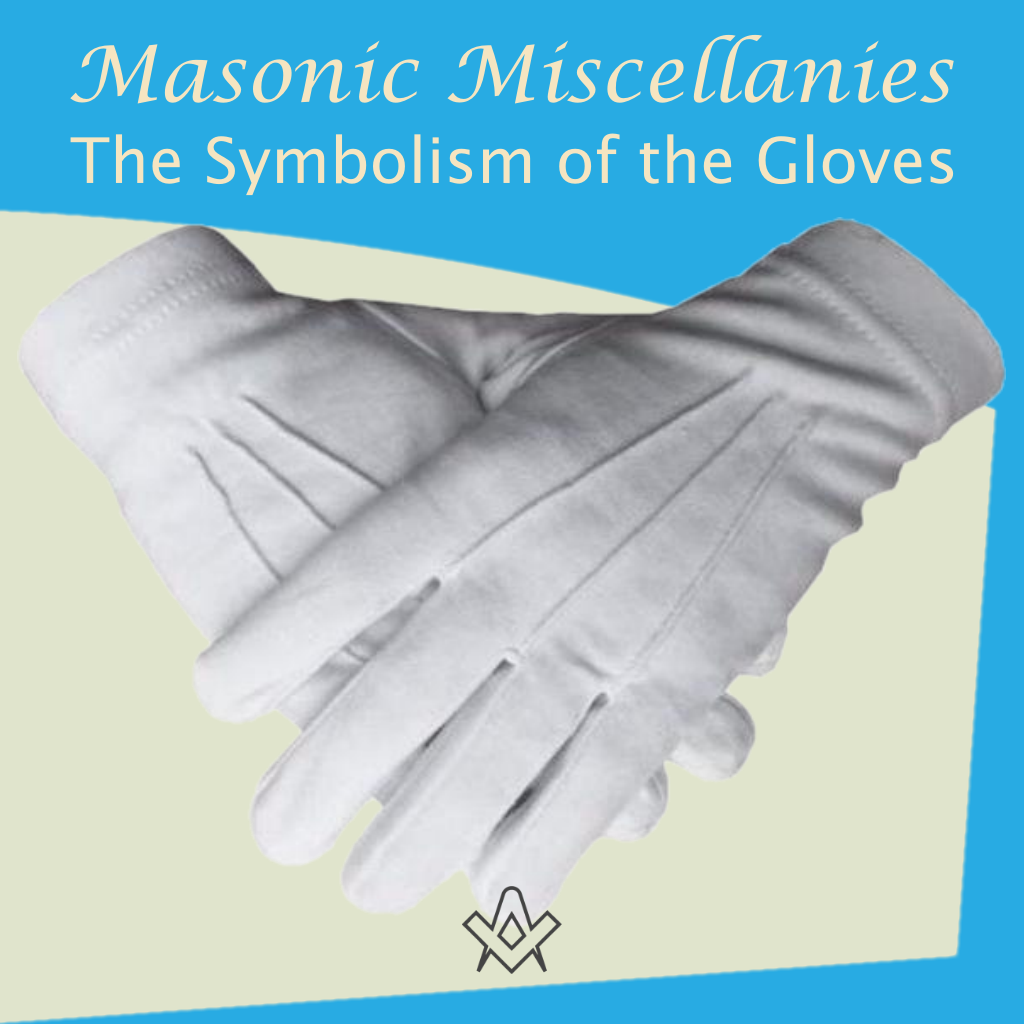The investiture with the gloves is very closely connected with the investiture with the apron, and the consideration of the symbolism of the one naturally follows the consideration of the symbolism of the other.
The Symbolism of the Gloves
Chapter XX, extracted from The Symbolism of Freemasonry – Albert G. Mackey, 1882
In the continental rites of Masonry, as practised in France, in Germany, and in other countries of Europe, it is an invariable custom to present the newly-initiated candidate not only, as we do, with a white leather apron, but also with two pairs of white kid gloves, one a man’s pair for himself, and the other a woman’s, to be presented by him in turn to his wife or his betrothed, according to the custom of the German masons, or, according to the French, to the female whom he most esteems, which, indeed, amounts, or should amount, to the same thing.
There is in this, of course, as there is in everything else which pertains to Freemasonry, a symbolism. The gloves given to the candidate for himself are intended to teach him that the acts of a mason should be as pure and spotless as the gloves now given to him. In the German lodges, the word used for acts is of course handlungen, or handlings, “the works of his hands,” which makes the symbolic idea more impressive.

Portrait of the antiquary Robert Plot, D.D., by Sylvester Harding. Drawn on paper. 170 mm x 145 mm. Courtesy of the British Museum, London.
IMAGE LINKED: wikimedia Attribution 4.0 International (CC BY 4.0)
Robert Plot (1640 – 1696) was an English naturalist, first Professor of Chemistry at the University of Oxford, and the first keeper of the Ashmolean Museum.
Dr. Robert Plot—no friend of Masonry, but still an historian of much research—says, in his “Natural History of Staffordshire,” that the Society of Freemasons, in his time (and he wrote in 1660), presented their candidates with gloves for themselves and their wives.
This shows that the custom still preserved on the continent of Europe was formerly practised in England, although there as well as in America, it is discontinued, which is, perhaps, to be regretted.
But although the presentation of the gloves to the candidate is no longer* practised as a ceremony in England or America, yet the use of them as a part of the proper professional clothing of a mason in the duties of the lodge, or in processions, is still retained, and in many well-regulated lodges the members are almost as regularly clothed in their white gloves as in their white aprons.
The symbolism of the gloves, it will be admitted, is, in fact, but a modification of that of the apron.
They both signify the same thing; both are allusive to a purification of life. “Who shall ascend”, says the Psalmist, “into the hill of the Lord? or who shall stand in his holy place? He that hath clean hands and a pure heart”.
The apron may be said to refer to the “pure heart”, the gloves to the “clean hands”. Both are significant of purification—of that purification which was always symbolized by the ablution which preceded the ancient initiations into the sacred Mysteries.
But while our American and English masons have adhered only to the apron, and rejected the gloves as a Masonic symbol, the latter appear to be far more important in symbolic science, because the allusions to pure or clean hands are abundant in all the ancient writers.
“Hands”, says Wemyss, in his “Clavis Symbolica”, “are the symbols of human actions; pure hands are pure actions; unjust hands are deeds of injustice”.
There are numerous references in sacred and profane writers to this symbolism. The washing of the hands has the outward sign of an internal purification.
Hence the Psalmist says, “I will wash my hands in innocence, and I will encompass thine altar, Jehovah”.
In the ancient Mysteries the washing of the hands was always an introductory ceremony to the initiation, and, of course, it was used symbolically to indicate the necessity of purity from crime as a qualification of those who sought admission into the sacred rites; and hence on a temple in the Island of Crete this inscription was placed: “Cleanse your feet, wash your hands, and then enter.”
Indeed, the washing of hands, as symbolic of purity, was among the ancients a peculiarly religious rite. No one dared to pray to the gods until he had cleansed his hands.
Thus Homer makes Hector say,—
“Χερσὶ δ’ ἀνίπτοισιν Διῒλείβειν Ἃζομαι.”—Iliad, vi. 266.
“I dread with unwashed hands to bring
My incensed wine to Jove an offering.”
In a similar spirit of religion, Æneas, when leaving burning Troy, refuses to enter the temple of Ceres until his hands, polluted by recent strife, had been washed in the living stream.
“Me bello e tanto digressum et cæde recenti,
Attrectare nefas, donec me flumine vivo
Abluero.”—Æn. ii. 718.
“In me, now fresh from war and recent strife,
‘Tis impious the sacred things to touch
Till in the living stream myself I bathe.”
The same practice prevailed among the Jews, and a striking instance of the symbolism is exhibited in that well-known action of Pilate, who, when the Jews clamored for Jesus, that they might crucify him, appeared before the people, and, having taken water, washed his hands, saying at the same time, “I am innocent of the blood of this just man. See ye to it.”
In the Christian church of the middle ages, gloves were always worn by bishops or priests when in the performance of ecclesiastical functions.
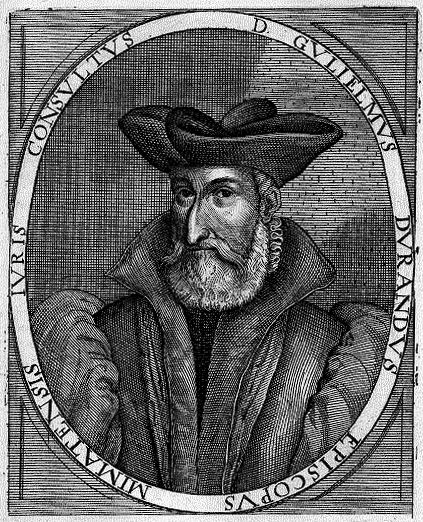
Guillaume Durand, or William Durand (c. 1230 – November 1, 1296), also known as Durandus, Duranti or Durantis, from the Italian form of Durandi filius, as he sometimes signed himself, was a French canonist and liturgical writer, and Bishop of Mende.
IMAGE LINKED: wikimedia Attribution 4.0 International (CC BY 4.0)
They were made of linen, and were white; and Durandus, a celebrated ritualist, says that “by the white gloves were denoted chastity and purity, because the hands were thus kept clean and free from all impurity”.
There is no necessity to extend examples any further. There is no doubt that the use of the gloves in Masonry is a symbolic idea borrowed from the ancient and universal language of symbolism, and was intended, like the apron, to denote the necessity of purity of life.
We have thus traced the gloves and the apron to the same symbolic source. Let us see if we cannot also derive them from the same historic origin.
The apron evidently owes its adoption in Freemasonry to the use of that necessary garment by the operative masons of the middle ages. It is one of the most positive evidences—indeed we may say, absolutely, the most tangible evidence—of the derivation of our speculative science from an operative art.
The builders, who associated in companies, who traversed Europe, and were engaged in the construction of palaces and cathedrals, have left to us, as their descendants, their name, their technical language, and that distinctive piece of clothing by which they protected their garments from the pollutions of their laborious employment. Did they also bequeath to us their gloves?
This is a question which some modern discoveries will at last enable us to solve.
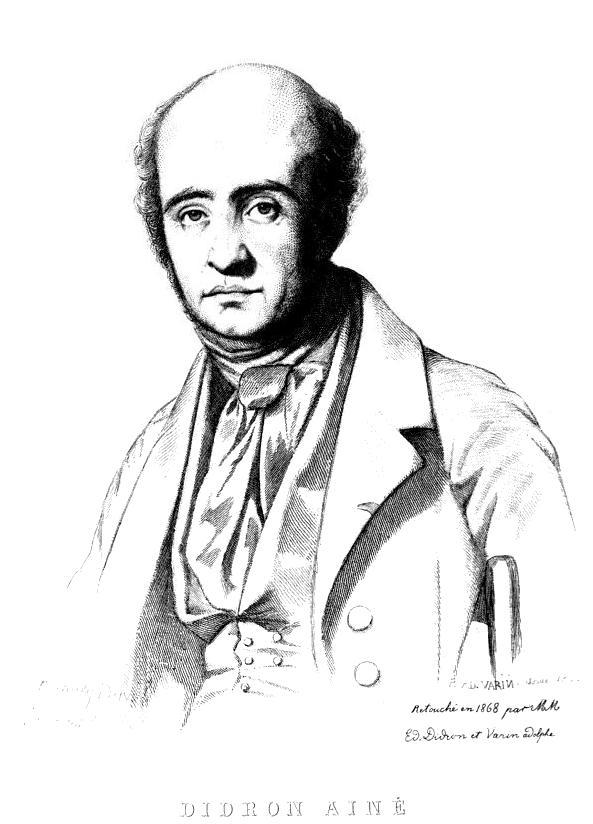
Adolphe Napoléon Didron (1806–1867) was a French art historian and archaeologist. – n 1844, he originated the Annales archéologiques, a periodical devoted to his favorite subject, which he edited until his death.
IMAGE LINKED: wikimedia Attribution 4.0 International (CC BY 4.0)
A N. Didron in his “Annales Archeologiques”, presents us with an engraving, copied from the painted glass of a window in the cathedral of Chartres, in France.
The painting was executed in the thirteenth century, and represents a number of operative masons at work.
Three of them are adorned with laurel crowns. May not these be intended to represent the three officers of a lodge?
All of the Masons wear gloves. Didron remarks that in the old documents which he has examined, mention is often made of gloves which are intended to be presented to masons and stone-cutters.
In a subsequent number of the “Annales”, he gives the following three examples of this fact:—
In the year 1331, the Chatelan of Villaines, in Duemois, bought a considerable quantity of gloves, to be given to the workmen, in order, as it is said, “to shield their hands from the stone and lime”.
In October, 1383, as he learns from a document of that period, three dozen pairs of gloves were bought and distributed to the masons when they commenced the buildings at the Chartreuse of Dijon.
And, lastly, in 1486 or 1487, twenty-two pair of gloves were given to the masons and stone-cutters who were engaged in work at the city of Amiens.
It is thus evident that the builders—the operative masons—of the middle ages wore gloves to protect their hands from the effects of their work.
It is equally evident that the speculative masons have received from their operative predecessors the gloves as well as the apron, both of which, being used by the latter for practical uses, have been, in the spirit of symbolism, appropriated by the former to “a more noble and glorious purpose”.
*Ed Note: The presentation of the gloves to the candidate is still practised as a ceremony in England by some Lodges
Article by: Albert G. Mackey
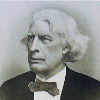
Albert Gallatin Mackey (1807 – 1881) was an American medical doctor and author.
He is best known for his books and articles about freemasonry, particularly the Masonic Landmarks.
In 1849 he established The Southern and Western Masonic Miscellany, a weekly masonic magazine.
He served as Grand Lecturer and Grand Secretary of The Grand Lodge of South Carolina, as well as Secretary General of the Supreme Council of the Ancient and Accepted Scottish Rite for the Southern Jurisdiction of the United States
Recent Articles: Masonic Miscellanies
 Masonic Miscellanies - The Amulet of the Ladder Explore the cosmic significance of the Ladder in ancient Egyptian mythology through Wallis Budge's "Egyptian Magic." Discover how this profound symbol bridges the mortal and divine, encapsulating the Egyptians' fervent afterlife aspirations with a blend of myth, magic, and material culture. Dive into the celestial ascent of Osiris and mortal souls. |
 Masonic Miscellanies - Adulterine Gilds Guilds, the associations that shaped medieval European society, were more than just organizations of artisans and merchants. They played a vital role in the economic and social development of towns and cities. This exploration delves into the intriguing concept of adulterine gilds and their interconnectedness with guilds, offering insight into the significance of legal authorization and recognition in medieval Europe. |
 Masonic Miscellanies - Masonic Orb Discover the fascinating world of Masonic ball watch fobs, intricately crafted with tiny pyramids that form a cross when opened. These decorative accessories were all the rage in the late 1800s and early 1900s, and they still hold a certain allure today. Explore the different varieties and symbols found on these unique pieces that carry deep Masonic meaning. |
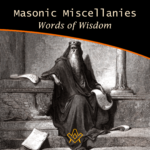 Masonic Miscellanies – Words of Wisdom Uncover timeless wisdom from King Solomon to Albert Pike in our latest Masonic Miscellanies, a treasure trove of insights for Masons. Journey through the ages and glean inspiring sayings, reflecting on their profound influence on Masonic principles. An enriching read for the enlightened. |
 Masonic Miscellanies - Symbolism of the Right Hand Unlock the enigmatic realm of Freemasonry as we delve into its age-old symbols, rituals, and philosophies. This thought-provoking exploration, drawn from Mackey's Revised Encyclopedia of Freemasonry, focuses on the iconic 'right hand' symbol - its rich history, universality, and profound significance. |
 Masonic Miscellanies - Order of the Secret Monitor Unveil the mystery of Freemasonry with 'The Order of the Secret Monitor'. Discover this lesser-known appendant order, its unique rituals, and the profound teachings it offers. Explore the bonds of friendship and brotherhood it fosters, all wrapped in an intriguing cloak of mystery. Your journey into the depths of Masonic wisdom begins here. |
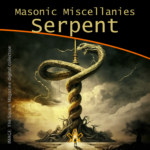 Masonic Miscellanies - The Symbol of the Serpent As a symbol, the serpent obtained a prominent place in all the ancient initiations and religions. |
 Masonic Miscellanies - The Four Veils in Royal Arch Masonry What are the four veils in Royal Arch Masonry? And what is the 'Ceremony of Passing the Veils'? Although common throughout Scotland, Ireland and the United States, it is mostly unknown in England, presently only worked in the Province of Bristol. ( and by dispensation ) |
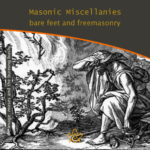 Masonic Miscellanies - Bare feet and Freemasonry A candidate for initiation into a Masonic Lodge often finds the requirements which he/she must fulfil somewhat odd. The mode of preparation often remains a puzzle, since the ritualistic explanation is not offered in full. Why are we 'slipshod' or "bare-footed" in Masonic Ritual? |
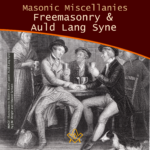 Masonic Miscellanies – Freemasonry and Auld Lang Syne Millions of people throughout the world will sing Auld Lang Syne to see out the Old Year. Few will know all the words, fewer still know what they mean, or that there is a link to Freemasonry. |
 Masonic Miscellanies - The Mosaic Pavement - why mosaic, why pavement? We are all familiar with the black and white chequered flooring of the Masonic lodge but where did it originate? There are a few theories… |
 Masonic Miscellanies – Masonic Master's Carpets Have you got a magic "Masonic Master's Carpet" in your lodge? I say 'magic' with my tongue firmly in my cheek because (as far as I know) these fabulous works of art don't bestow any mystical powers but can bestow some educational ones! However, considering their possible value today, they may magic up some interest (or funds). |
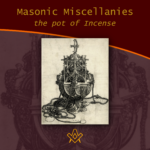 Masonic Miscellanies – The Pot of Incense Just when the pot of incense became an emblem of the third section of the Sublime Degree can not be stated with certainty. It is, apparently, an American invention or addition. But what does it symbolise? |
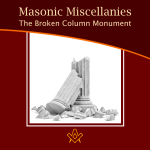 Masonic Miscellanies - The Broken Column Monument The story of the broken column was first illustrated by Amos Doolittle in the "True Masonic Chart" by Jeremy Cross, published in 1819. |
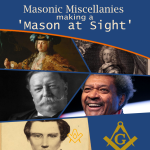 Masonic Miscellanies - Making a 'Mason at Sight' What does it mean to make a 'Mason at sight', and who was made one? |
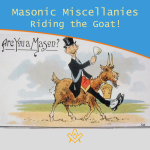 Masonic Miscellanies - Riding the Goat! Many Freemasons will have come across the phrase 'riding the goat', and will no doubt have been the butt of a joke about it (sorry, I couldn't resist!) But what does it mean and where did the phrase come from? |
 Masonic Miscellanies - What are the 'three dots'? Three dots or points in an upright triangular shape ∴ is most commonly known as the 'therefore' sign – so why is it used in Freemasonry? |
 Masonic Miscellanies - Keep Within Compass This month we discover a series of allegorical prints warning us to "Keep within Compass and you shall be sure, to avoid many troubles which others endure." |
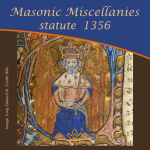 Masonic Miscellanies - statute 1356 Further to the reference in the article – The Builders - 6 - Free-Masons 'a statute was enacted against the Free-masons in 1356' – Regulations for masons who are hewers, on the one hand, and the light masons and setters on the other. |
 Masonic Miscellanies - An Anti-Masonic 'Apron'? The Anti-Masonic 'Apron' was created during the 1832 Presidential election in USA. It was not Ani-masonic. And it was not an apron. Read on to find out what and why it was created. |
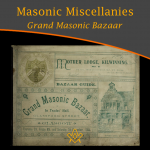 Masonic Miscellanies - Grand Masonic Bazaar (1895) Grand Masonic Bazaar (1895); to raise funds to clear the debt incurred by “Mother Kilwinning” in rebuilding their Lodge. |
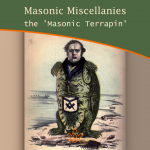 Masonic Miscellanies - the 'Masonic Terrapin' A satirical book from 1851 includes a bizarre caricature of a 'Masonic Terrapin' - all I can say is 'read on'… |
 Masonic Miscellanies - Masonic Bookplates You probably know what a bookplate is for, but did you know that the earliest known book mark/label dates from the reign of Amenhotep III in Egypt around 1391−1353 BCE?! |
 Masonic Miscellanies - Freemasonry & Bees Freemasonry & Bees - what's the buzz? The bee was among the Egyptians the symbol of an obedient people, because, says Horapollo, of all insects, the bee alone had a king. |
 Masonic Miscellanies - The mystery of the Tattooed Freemason In 1894, the body of a drowned man was found in the Bay of San Francisco - what they discovered was amazing. |
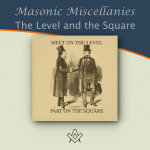 Masonic Miscellanies - The Level and the Square (A Poem) The Level and the Square (A Poem) - "We meet upon the Level, and we part upon the Square – |
 Masonic Miscellanies - The Mystic Tie What is the 'Mystic Tie'? Clue: it's not an item of neckwear! |
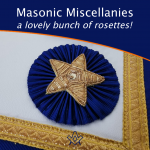 Masonic Miscellanies - A lovely bunch of rosettes! Where did the origin of the use of rosettes on Masonic aprons come from ? |
 Masonic Miscellanies - The Lodge of Sorrow The Lodge of Sorrow - Extracted General Ahiman Rezon, by Daniel Sickles, [1868] |
 Masonic Miscellanies - Memento Mori Memento Mori - a Masonic reminder to make your mark on the world |
 Masonic Miscellanies - A closer look at the Level and the Plumb-rule A closer look at the Level and the Plumb-rule |
 Masonic Miscellanies - The Symbolism of the Gloves The Symbolism of the Gloves and why Freemasons wear white gloves |
 Masonic Miscellanies - Will the real James Anderson please stand up? Will the real James Anderson please stand up? |
 Masonic Miscellanies - The Legend of the Third Degree The most important and significant of the legendary symbols of Freemasonry is, undoubtedly, that which relates to the fate of Hiram Abif. |
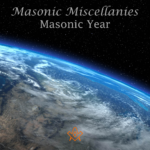 Masonic Miscellanies - Masonic Calendar Why do Freemasons use different 'years' to our regular calendar? |
 Masonic Miscellanies - What is a 'Lewis'? The English word 'Lewis' is a term belonging to operative Masonry, and signifies an iron cramp, which is inserted in a cavity prepared for the purpose in a large stone. |
 Masonic Miscellanies - From J.S.M. Ward Ever wondered why masons had to be 'free' or why we have a Tyler? |
masonic knowledge
to be a better citizen of the world
share the square with two brothers

click image to open email app on mobile device



